
LEFT The Grid of Prefixed Acousmatics on view in the Strauss Gallery during Resonant Spaces. Photo by Rob Strong.

Sound often comes with anticipation, waiting to be performed and sometimes detached from its origin.
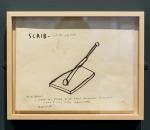
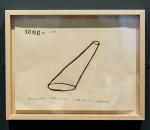
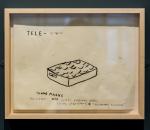

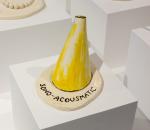
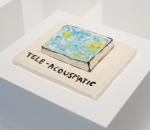
LEFT Selections from "The Grid of Prefixed Acousmatics." Photos by Rob Strong.
Sound often comes with anticipation, waiting to be performed and sometimes detached from its origin. The Grid of Prefixed Acousmatics is based on the concept of “acousmatic” sound, or sound that is heard, but with no visible source. This concept resonates with the French composer and writer Pierre Schaeffer’s “sound object” (l’objet sonore) theory, which describes how sound becomes an independent “object,” functioning without considering its origins. This allows any sound to be played from any source.
—Christine Sun Kim
The “acousmatic” experience is akin to sound captions in movies and on television that notate off-screen sounds whose origins may remain visually unidentifiable. Kim has always perceived sound as a transitory object. Deaf since birth, Kim has extensive experience with interpreters and captions, and for her, some sounds have developed secondary origins. During the process of translating, interpreters require a very brief delay to accurately sign what they hear, creating a sense of anticipation and perhaps a bit of abstraction. The sounds interpreters and captioners convey are technically acousmatic, but when Kim sees and reads them, they return to a non-acousmatic form and are “seen” again, but in a different and compressed form.
For this ceramic project, Kim found clay to be the ideal medium to describe the non-acousmatic form of both interpreters and captioners, because of its visual and tangible elements. Presenting acousmatic sounds as clay objects is essentially an act of cementing sounds, just as interpreters and captioners transform certain sounds into actions. When Kim looked up a list of prefixes in order to find the right one to describe her acousmatic experience, she realized that a number of them, such as “post-” and “anti-,” seem fitting. She developed a list of prefixed acousmatics and shaped them into small abstract and representational sculptures. The bases and handwritten labels convey a sense of each sculpture’s place in the grid and its meaning, lending a dictionary-like quality to the installation.
Christine Sun Kim (born 1980) uses the medium of sound in performance and drawing to investigate her relationship with spoken languages and her aural environment. Selected exhibition and performance venues include White Space, Beijing; Carroll/Fletcher, London; De Appel, Amsterdam; nyMusikk, Oslo; Sound Live Tokyo; Berlin Biennale; Shanghai Biennale; and MoMA PS1, New York. Kim was awarded TED and MIT Media Lab Fellowships.
Special thanks to the Hanover League of New Hampshire Craftsmen, Deborah Churchill, and Karin Rothwell, and to interpreters Victoria Clark, Cylyn Reviczky, and Denise Khaler.

Amelia Kahl is the associate curator of academic programming at the Hood Museum of Art. She runs the museum’s Bernstein Center for Object Study and teaches with the museum’s 65,000-object collection across the Dartmouth curriculum. Her exhibition projects for the Hood have included "Water Ways: Tension and Flow" (2015), "The Stahl Collection" (2015, co-curated with Barbara MacAdam, Jonathan L. Cohen Curator of American Art), and "Emmet Gowin Dreams of Stars" (2014).

Spencer Topel creates installations and performance pieces that are immersive experiences, fusing sound, visual components, and interactive expression. Trained in music conservatories as a composer and violinist, he produced work for orchestral and chamber ensembles for over twenty years. In 2011 he collaborated with sculptor Soo Sunny Park on a yearlong installation titled Capturing Resonance, presented at deCordova Sculpture Park and Museum in Lincoln, Massachusetts. Since then, Topel’s practice has expanded to include visual art in a distinctive body of work that engages artwork as observer and listener, where installations gain agency in the interactions between visitors and environments.
